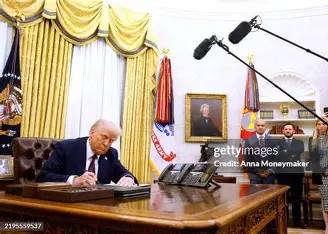President Donald Trump’s latest push to end the Gaza conflict has revealed a bold and unconventional approach to Middle East diplomacy, one that blends pressure tactics, strategic timing, and public declarations designed to box both Israel and Hamas into a compromise. His strategy, rooted in his broader philosophy of deal-making, is based on a simple but risky principle: announce progress before both sides have fully agreed, and force momentum where none previously existed.
Trump’s method is not about waiting for perfect alignment between the warring parties. Instead, it relies on declaring that a deal is already underway and challenging both sides to live up to that statement. By doing so, he turns negotiation into a matter of public commitment, making it politically and diplomatically difficult for either side to backtrack. The result is a high-stakes psychological play that keeps both parties at the table while accelerating the path to a potential ceasefire.
“In essence, Trump makes the deal first, then works on the details later,” said a senior diplomatic source familiar with the process. “It’s a calculated move that forces both sides to respond to the perception of progress, rather than waiting endlessly for consensus.”
This approach stands in stark contrast to the traditional diplomacy that has long characterized U.S. involvement in the Israeli-Palestinian conflict. For decades, talks have been weighed down by endless rounds of technical discussions, disputes over small procedural issues, and an unwillingness to make the tough political decisions necessary to achieve lasting peace. Trump’s strategy, however, attempts to short-circuit that process by focusing on decisive action and public accountability.
In recent weeks, Trump has made several public remarks suggesting that both Israel and Hamas are “close to a framework” for ending the fighting. Behind the scenes, U.S. negotiators have been working to secure limited ceasefires, prisoner exchanges, and humanitarian corridors. Yet Trump’s public statements go beyond what has been agreed upon, effectively creating pressure for both sides to follow through on what the president claims has already been accepted.
The tactic mirrors Trump’s earlier diplomatic maneuvers, including his handling of the short-lived Iran conflict several years ago. During that 12-day confrontation, he announced that both sides had agreed to de-escalate, even though the terms were still under negotiation. By publicly framing it as a done deal, he gave each side political cover to step back from the brink without appearing to concede defeat.
Analysts suggest that Trump’s latest strategy in Gaza is built on the same foundation. By declaring progress early, he provides political breathing room for both Israeli and Hamas leaders, who face intense domestic pressures. For Israel, the incentive lies in demonstrating strength and control without committing to a full-scale invasion that could erode international support. For Hamas, it offers a path to claim victory through negotiation rather than prolonged warfare that risks further devastation in Gaza.
Critics, however, warn that this kind of diplomacy is a gamble. Announcing a deal before it exists could backfire if either side refuses to comply, undermining U.S. credibility and fueling skepticism about Washington’s role as a neutral mediator. “It’s deal-making by momentum,” said one Middle East policy expert. “It can work in the short term, but if it collapses, it risks worsening the distrust between all parties.”
Supporters of the president argue that his approach represents a necessary break from the cautious, drawn-out negotiations that have historically failed to produce results. They point to Trump’s previous diplomatic successes, including his role in brokering normalization agreements between Israel and several Arab nations, as evidence that unconventional tactics can yield real-world progress.
For Trump, the Gaza deal is not just about ending one of the region’s deadliest conflicts; it is also a test of his ability to project American leadership in a complex and divided Middle East. His administration has framed the push as part of a broader strategy to stabilize the region, strengthen U.S. alliances, and prevent Iran and its proxies from exploiting the chaos.
As the negotiations continue, one thing is clear: Trump’s strategy of boxing Israel and Hamas into a deal has changed the diplomatic dynamics around Gaza. By forcing both sides to operate under the assumption that an agreement is already on the table, he has turned perception into leverage, and perception, in high-stakes diplomacy, can be just as powerful as reality.
Whether this unconventional tactic leads to a lasting peace or simply another fragile truce remains to be seen. But Trump’s gamble underscores a key belief that has defined his presidency: in diplomacy, as in business, sometimes declaring a win is the first step to achieving one.



